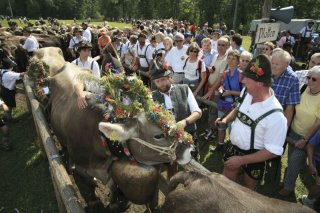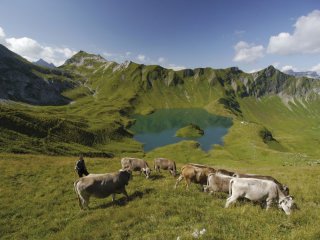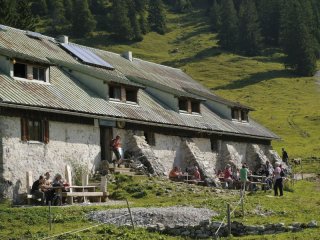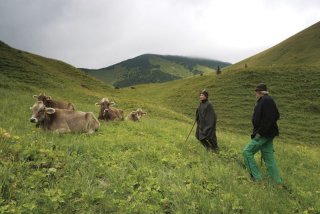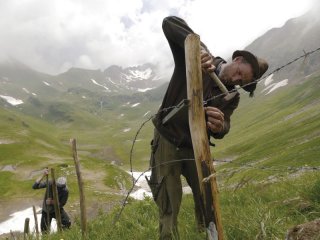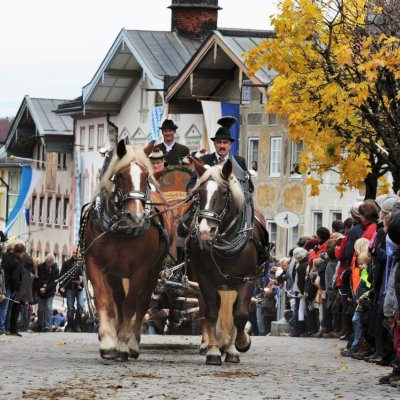Register of Good Safeguarding Practices
Allgaeu’s High Alpine Agriculture in Bad Hindelang
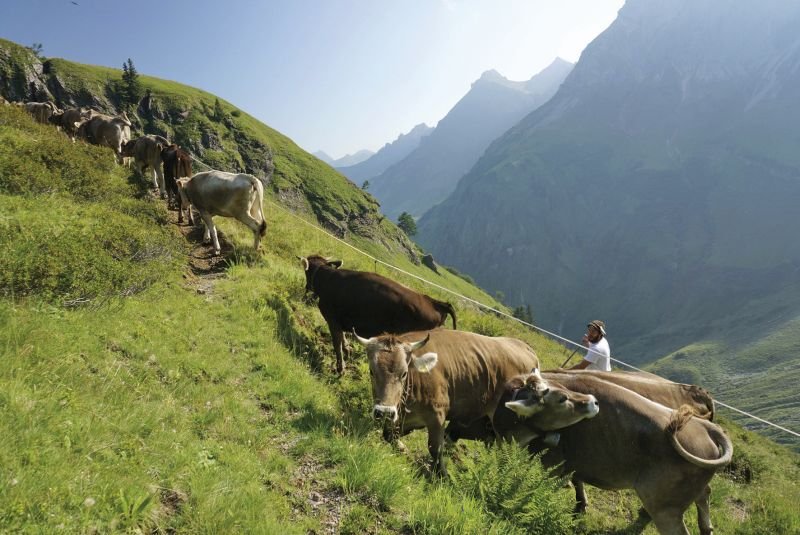
Alps (Alemannic, Old-Bavarian: “Almen”) are summer pastures in the mountains, with which mountain farmers extend the fodder base of the valley. The cattle grazes until mid-September in different altitudes and is gradually moved downhill from higher positions. The herds follow the development of the vegetation in the course of the year. At the end of the summer grazing the cattle is moved back to the valley, where it is separated and returned to the respective owners.
Facts & Figures
Crucial date: All seasons
Inscription: 2016
Where to find: Bad Hindelang (Bavaria)
Contact
Marktgemeinde Bad Hindelang
Erster Bürgermeister Adalbert Martin
info@badhindelang.de
Website
The central economic buildings in the area of pasture are also called Alps. Alps are managed by the Alp staff (“Aelpler”) and day workers who take care of the infrastructure in the mountains.
The broader area of Bad Hindelang in the Bavarian Oberallgaeu has the most Alps in Germany: there are 45 recognized and state-sponsored Alps with an area of 8,000 hectares. Three different types of alpine pastures are distinguished while hybrid forms are not unusual: “Galtalpen” are used for summer grazing of young cattle, from “Kuhalpen” dairies get their milk and on “Sennalpen” milk is processed to butter and cheese. In Bad Hindelang, alpine agriculture not only shapes people’s sense of homeland and identity but further the tourism sector as a whole. Here, for example, one of the first and most famous cattle sheaths in Germany takes place.
The community of Bad Hindelang has been practicing the ecological model ("Oekomodell Hindelang") successfully since 1988 to preserve the alpine pastures of Allgäu’s high alpine culture. Within this framework, the natural and sustainable economy of alpine farming was extended to small mountain farms in the valleys. By means of ecological compensation payments for a comprehensive landscape management and the production of high-quality groceries, the trend of closing farms could be largely stopped.
Despite all modern technical means, alpine farming has remained an archaic form of economic activity under extreme climatic conditions with high physical demands.
Allgaeu’s high alpine agriculture prevents negative aspects of landscaping and protects the municipality against a “race” for tourists. The municipality focuses on nature conservation and sustainability, regional and direct marketing and gentle tourism. High alpine agriculture is a form of agriculture that has contributed to the emergence of a species-rich cultivated landscape and has preserved it to this day. It is therefore a living cultural tradition with great history. The goal of the model was and is the continuation of the high alpine agriculture that characterizes everyday life of respective persons without any kind of musealization. Festivals and transmission of knowledge of craftsmanship are also part of the conservation program. The landscape, which is characterized by the identity-building alpine agriculture, is now the main causeway for tourists to visit the region.
Alpine farming is run by people who live with natural cycles, with the circle of the year and with century-old traditions. The high alpine agriculture, at first sight, seems as "fallen out of time", but is anything but museum-like. The interest of younger generations is great, income of farmers is secured through the production of high-quality products, landscape care and gentle tourism. Independent of this, farmers understand their Alps and the associated knowledge and skills as an inalienable "heritage" which must be protected and maintained.
The knowledge is passed on by the bearers. Adaptations to current developments are and have been implemented carefully and sensibly, such as the establishment of a cooperative and adjustments in the choice of livestock. 80 percent of the municipal area of Bad Hindelang are today under landscape and nature conservation, several alpine buildings are under state monument preservation. There are training and further education possibilities, which are carried out by experienced alpine farmers. The preservation of traditions has a positive impact on the landscape, it is a sustainable method of cultivation and contributes significantly to the identity of the farmers and the whole population of the region.


